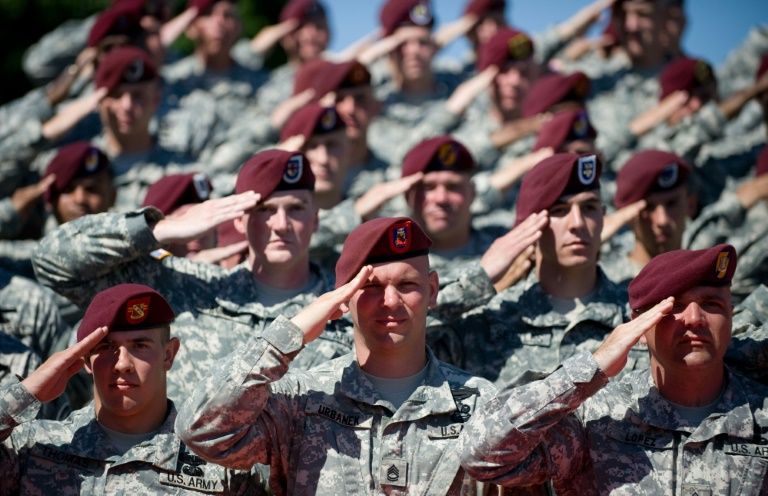The 10 US Army bases named for Confederate officers
()
Members of the 82nd Airborne Division salute at Fort Bragg in North Carolina. ©AFP/File SAUL LOEB
The protests across the United States sparked by the death of George Floyd have reignited moves to rename US Army bases honoring military figures of the pro-slavery Civil War South.
President Donald Trump has said he will “not even consider” renaming the bases, which he described as “part of a Great American Heritage, and a history of Winning, Victory, and Freedom.”
Despite Trump’s opposition, a Republican-led Senate committee approved an amendment on Wednesday requiring the Pentagon to rename the bases within three years.
These are the 10 bases in question. All of them are located in Southern states that were part of the Confederacy during the 1861-1865 Civil War:
– Camp Beauregard –
Camp Beauregard in Louisiana is a training center for the Louisiana National Guard.
It is named after General Pierre Gustave Toutant Beauregard (1818-1893), who was known as “The Little Napoleon” and whose troops fired on Fort Sumter in April 1861, the first salvo of the Civil War.
– Fort Benning –
Fort Benning in Georgia is home to the US Army Infantry School.
It is named after Brigadier General Henry Benning (1814-1875), an ardent secessionist who argued for the “superiority” of the white race.
– Fort Bragg –
Fort Bragg in North Carolina is home to the US Special Forces Command and the storied 82nd Airborne Division.
It is named after Major General Braxton Bragg (1817-1876).
Described by a contemporary as “irritable and quarrelsome,” Bragg was an inept general and was relieved of command after his defeat in the 1863 Battle of Chattanooga.
– Fort Gordon –
Fort Gordon in Georgia is home to the US Army Signal Corps and the US Army Cyber Corps.
It is named for Major General John Brown Gordon (1832-1904), who was elected to the US Senate from Georgia after the war and may have once headed the Ku Klux Klan in the state.
– Fort A.P. Hill –
Fort A.P. Hill is a combined-arms training center in Virginia.
It is named after Lieutenant General A.P. Hill (1825-1865), who was shot and killed a week before the Civil War ended.
– Fort Hood –
Fort Hood in Texas is home to such renowned units as the 1st Cavalry Division.
It is named after General John Bell Hood (1831-1879), who suffered a series of notable battlefield defeats during the war for which, according to historians, he had a tendency to blame subordinates.
Hood had to be strapped to his saddle after losing his right leg in the Battle of Chickamauga.
– Fort Lee –
Fort Lee in Virginia is home to the US Army Quartermaster School.
It is named for General Robert E. Lee (1807-1870), the head of the Army of Northern Virginia whose April 1865 surrender to Union forces effectively ended the Civil War.
– Fort Pickett –
Fort Pickett in Virginia is a training center for the state’s National Guard.
It is named for Major General George Pickett (1825-1875), whose disastrous “Pickett’s Charge” at the 1863 Battle of Gettysburg is seen as a turning point in the Civil War.
– Fort Polk –
Fort Polk is a US Army training center in Louisiana.
It is named after Major General Leonidas Polk (1806-1864), an Episcopal bishop who took up arms and was killed in action in 1864.
– Fort Rucker –
Fort Rucker in Alabama is a training installation for US Army pilots.
It is named after Colonel Edmund Rucker (1835-1924), who lost his left arm and was captured at the 1864 Battle of Nashville, a resounding Confederate defeat.
Chris Lefkow
(AFP)
Disclaimer: Validity of the above story is for 7 Days from original date of publishing. Source: AFP.


